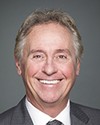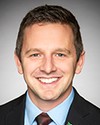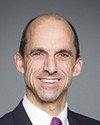When you go through this kind of exercise, you are always going to do a number of things in parallel. I am saying this because I have done this before, on this kind of scale—not 43 departments, but a quarter million end-users, yes. You don't want it to be a serial exercise.
The idea that there is always low-hanging fruit, targets of opportunity.... We knew we could close some number of data centres in the first year, and that happened. That is how we got to the 80 sites. I will call them “sites”, because in one case we found a server rack in a men's room, for instance. That is not a data centre, by any means.
Then you have others, which really were good data centres in their day. Those obviously take longer. If it is a closet somewhere that somebody shoved a server in, we go for those opportunities much more quickly.
You don't want to wait and say, “Well, we want to get all the planning done to the nth degree” before you take advantage of those opportunities. That is something that the organization has done.
While this wasn't called out in some of the previous reports, unit costs have been reduced for servers, for instance, by 30%, and for storage per terabyte by over 50%. We don't need the next transformation plan. We are achieving those today, but to really achieve the end state we need to revisit our plan, and that is what we are doing right now.




